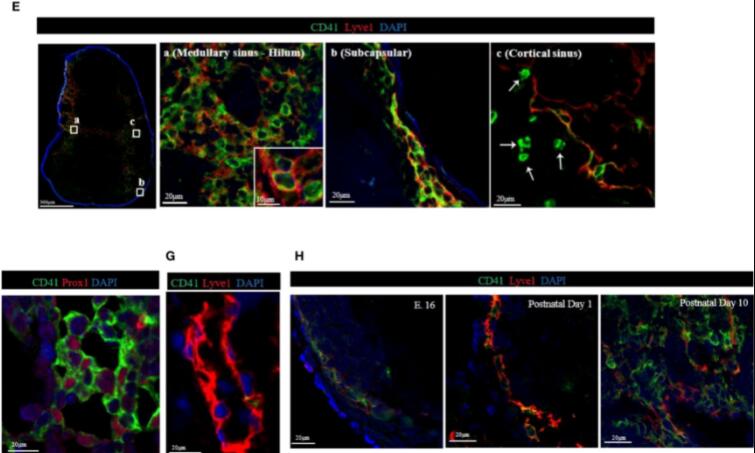
Recently, a research team led by Prof. JIANG Liwei from the Institute of Health and Medical Technology, Hefei Institutes of Physical Science of Chinese Academy of Sciences (CAS), collaborated with Professor Reza Abdi from Harvard Medical School in the United States, studied the Characterization of CD41+ cells in the lymph node.
In Frontiers in Immunology, they described how they proved that CD41+ cell subsets in mouse lymph nodes predominantly expressed stromal cell and mast cell surface marker molecules.
Lymph nodes are critical sites for immune responses, and the stromal cells of lymph nodes are critical for their function.
In this research, scientists conducted an in-depth analysis of non-traditional stromal cells in the stroma of lymph nodes and identified two distinct stromal cell subsets, CD41+ (platelet surface membrane protein integrin), Lyve1+ (lymphatic endothelial receptor) and CD41+ Lyve1-. The CD41+ Lyve1- cell subset mainly appeared in the lymph node stroma in the later stages of aged mice and highly expresses surface marker molecules of stromal cells, which provided a microenvironment for immune cell interaction.
"This subset was also identified in human lymph nodes," said DAI Li, first author of the paper.
The CD41+ Lyve1+ cell subset, on the other hand, resided mainly in the lymphatic fluid of the thoracic duct and was recycled throughout the body to replenish the subset in the lymph nodes.
This study further confirmed that the different stromal cell subsets in the lymph node have a clear division of functions, thereby ensuring the integrity and coordination of the entire lymph node function.

The images in different segments of lymphatic vasculature within mouse lymph nodes showed the vast majority of LYVE1+ cells co-expressed CD41.